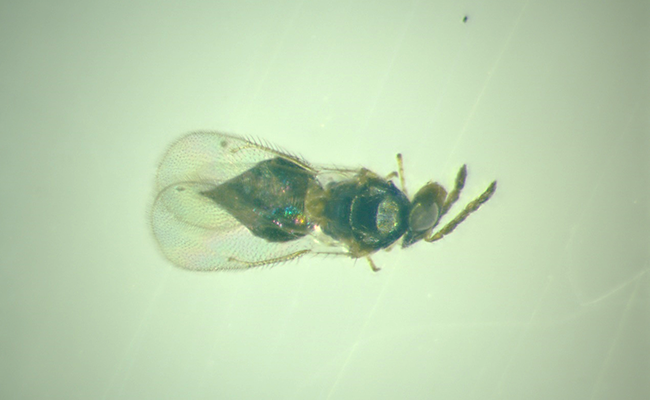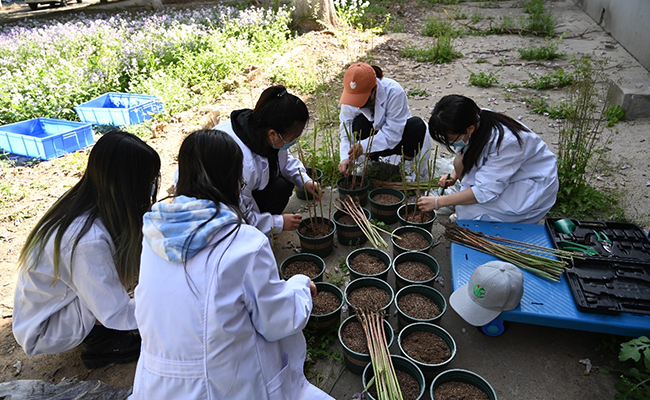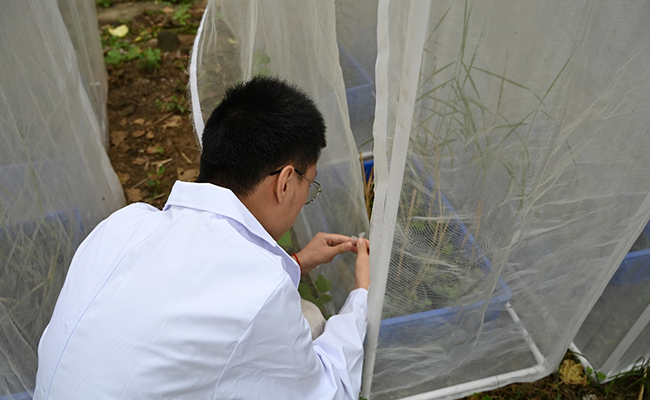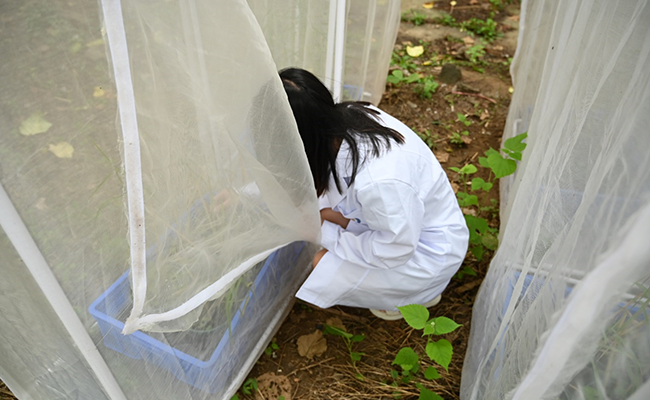Sino-ABCL Develops Protocol to Rear Aprostocetus sp. For Roseau Cane Scale Biological Control
By Chenxi Liu, USDA ARS Sino-American Biological Control Laboratory (SABCL)
Extensive injury and die-off of Phragmites australis associated with the exotic roseau cane scale, Nipponaclerda biwakoensis. Roseau cane or common reed (Phragmites spp.) is the dominant plant species and a critical component of the Mississippi River Delta in Louisiana, protecting the marsh ecosystem from erosion and storm-related impacts, maintaining shipping channels and oil infrastructure. The recent widespread dieback of Phragmites stands in the Mississippi River Delta is due, in part, to damage from herbivory by the non-native roseau cane scale, Nipponaclerda biwakoensis.
Current research shows that natural enemies play an important role in suppressing populations of roseau cane scale in their native range. Sino-ABCL researchers conducted three years of study in 2019, 2020 and 2021 and identified at least four different species of parasitic wasps in China, that are Astymachus japonicus, Boucekiella depressa, Aprostocetus sp. and Platencyrtus parkeri. As part of our work on selecting and testing a candidate biological control agent to help in managing invasive populations of roseau cane scale, Aprostocetus sp. (Figure 1) has been identified as being of particular interest. It is of interest because it shows high parasitism rates, is present across all collection regions, is not known to be a generalist, and is not already present as an adventive parasitoid in the invasive range of N. biwakoensis.
Sino-ABCL started to develop the rearing protocol of Aprostocetus sp. in 2022. Similar to other parasitiod mass rearing projects, Sino-ABCL conducted this research developing/optimizing three steps: 1) plant propagation, 2) scale inoculation, and 3) wasp exposure. Briefly, Sino-ABCL initiated phragmites plant propagation using rhizome material dug up from the field (Figure 2) and then covered with mesh cages (Figure 3). As the plants developed more below ground rhizome mass, unparasitized N. biwakoensis scale collected from the field (Figure 4) were inoculated onto the plants (Figure 5) and allowed to propagate. Finally, the scale populations with the highest population density were exposure to Aprostocetus wasp (Figure 6). Further research on the life history of Aprostocetus wasp will be explored to better understand the biological characteristics of the parasitoid.
 Figure 1. Aprostocetus sp.
Figure 1. Aprostocetus sp.

Figure 2. Growing phragmites plants using rhizome material.

Figure 3. Phragmites plants covered with mesh cages.

Figure 4. Collecting unparasitized N. biwakoensis scale in the field

Figure 5. Inoculation of crawlers developed in the gravid female scales.

Figure 6. Exposure roseau cane scales to Aprostocetus wasp
Contact: Chenxi Liu
The Sino-American Biological Control Laboratory (SABCL) was established in 1988 through an agreement between USDA ARS and the Chinese Academy of Agricultural Sciences (CAAS) and is based in the Institute of Plant Protection in Beijing. The objective of the Sino-ABCL is to search for, identify, and evaluate the potential of natural enemies of pest insects, weeds, and plant diseases that affect Chinese and U.S. agriculture, develop biological control agents, and evaluate biodiversity of insects based on DNA barcoding. Sino-ABCL established a collaborative working group with local collaborators, most of whom are from local agricultural research units, academies, and universities from 30 provinces in China. These collaborators help Sino-ABCL researchers conduct field surveys for biocontrol agents across China. Sino-ABCL has more than 30 years’ experience in classical biological control and other areas of pest management targeting species that include Asian Longhorn Beetle, salt cedar, soybean aphid, wheat stem sawfly, leafy spurge, emerald ash borer, brown marmorated stink bug, spotted wing drosophila and roseau cane scale. As a fundamental part of its research program, Sino-ABCL conducts studies in insect physiology, insect taxonomy, and insect biochemistry and molecular biology.
